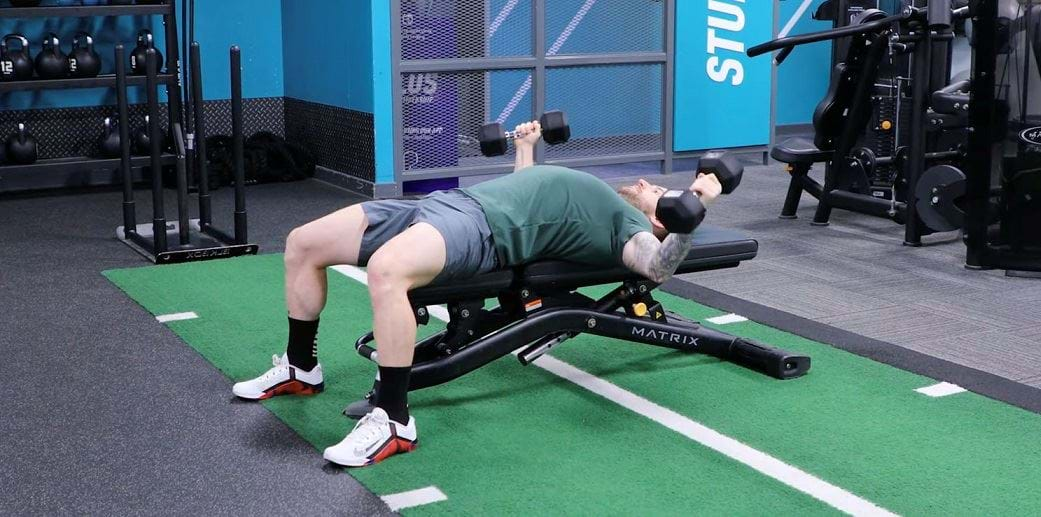Dumbbell Chest Fly
What Is A Dumbbell Chest Fly?

The dumbbell chest fly is an upper body isolation exercise that works the pectorals and deltoids, with the triceps and biceps also engaged to stabilise the movement. In addition to building muscle, this exercise can help to open the chest and improve flexibility, master scapular retraction, and improve coordination. Opening the chest muscles and strengthening those involved in scapular retraction can help to improve posture and reduce tightness in the upper body and back pain.
Unlike most chest exercises which involve a pressing movement, like the bench press, the chest fly uses adduction (bringing the arms into the midline) to work the muscles. This is a key function of the chest muscles that is often neglected in training programmes, and adding dumbbell flyes or other variations is a good way to add variety to your workouts and challenge the upper body in a different way.
The dumbbell fly requires the performer to lower the dumbbells in an arc motion until they're in line with the chest. The stretched position at the bottom of the movement is the most challenging, requiring pec contraction to push the dumbbells back to the starting position.
Check out some other chest fly variations: incline dumbbell chest flyes, decline dumbbell flyes, dumbbell floor flyes, single arm flyes, machine flyes
Commonly Asked Questions On Dumbbell Chest Flyes
The dumbbell fly is an effective way to build the chest and challenge the pectoral muscles. While this exercise isn’t as effective at building strength as pressing movements due to a lower load being lifted, it can build strength across a greater range of motion, improve flexibility, and help with hypertrophy. If your goal is to have a strong, defined chest, incorporating fly variations alongside chest pressing movements is best practice.
The pectorals are the main muscles worked in dumbbell flyes, with the deltoids also challenged. The triceps and biceps are activated to stabilise the movement.
The dumbbell fly is a push movement as it involves pushing the dumbbells towards each other in front of the body.
Dumbbell Chest Fly Tips
When performed incorrectly, the dumbbell fly can add put strain on the shoulder joint and overwork the chest. You can minimise this risk by using a light load (dumbbell flyes require significantly less load than chest pressing movements), keeping a soft bend at the elbows, keeping your shoulder blades retracted throughout, and lowering the dumbbells no lower than chest height. It can also be helpful to think about hugging a tree to ensure the arms follow the right movement.
The closer the weight gets to the top, the less resistance this exercise has, and you may notice that the dumbbell fly feels very easy when the dumbbells are close together. To keep resistance on the chest throughout, stop short of the dumbbells coming right next to each other and instead push the dumbbells until they are in line with each ear before continuing the next rep.
How To Do A Dumbbell Chest Fly
Holding a dumbbell in each hand, lie on your back on a flat bench with your feet flat on the ground. Squeeze your shoulder blades back against the bench. Maintain this throughout the exercise.
Press the dumbbells up in line with your chest, with your palms facing each other.
Take a deep breath and engage your core as you slowly lower the dumbbells in an arc direction, until the arms are almost parallel to the ground. Keep a soft bend in the elbows.
Breathe out as you squeeze your chest to push the dumbbells back together. As they get closer to the top, push the dumbbells so they’re in line with your ears.
If you’re not sure if any of the above exercises are suitable for you, please consult your doctor before you start it. Need guidance on how to perform the exercise? Ask a personal trainer at your gym.